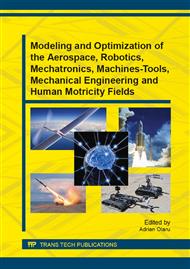p.646
p.652
p.659
p.665
p.673
p.681
p.689
p.695
p.701
Simple System for Supporting Learning of Human Motion Capabilities
Abstract:
The paper presents an idea of the automatic system which is capable of improving the rehabilitation process of people suffering from diseases of locomotor system, and is able to enhance a person’s learning the motion skills. The simplest form of the system consists of a MEMS (Micro Electro-Mechanical Systems) sensor which detects movements of parts of the human body. The article describes possible methods of classification of the sensor signal. As a result of this process, the system sends to the training person a message concerning appropriate correction of his motion. The authors assert that the system, using even unsophisticated hardware (one sensor integrated with a microcontroller) and a simple minimum distance classifier, is able to improve the rehabilitation or the learning process. The article attempts to articulate the main conditions determining an increasing of the efficiency of the proposed idea. Namely: creation of a communication standard between sensors and the host computer used by a physician/teacher, and taking into account the whole multidimensional signal provided by MEMS (3-axis accelerometer, gyroscope and magnetometer).
Info:
Periodical:
Pages:
673-680
Citation:
Online since:
June 2014
Authors:
Price:
Сopyright:
© 2014 Trans Tech Publications Ltd. All Rights Reserved
Share:
Citation:


